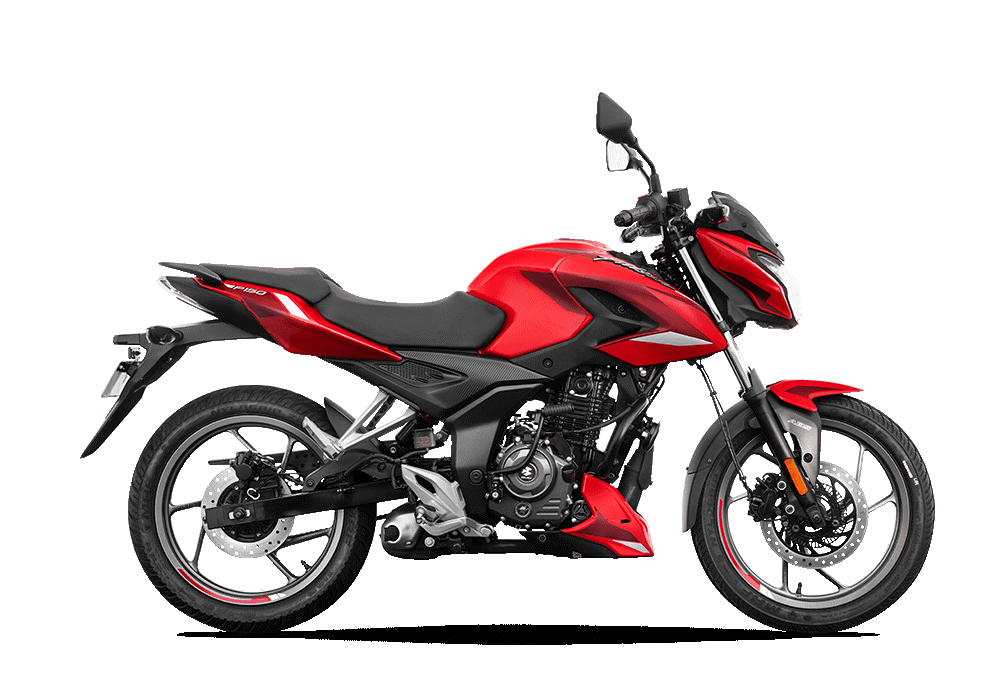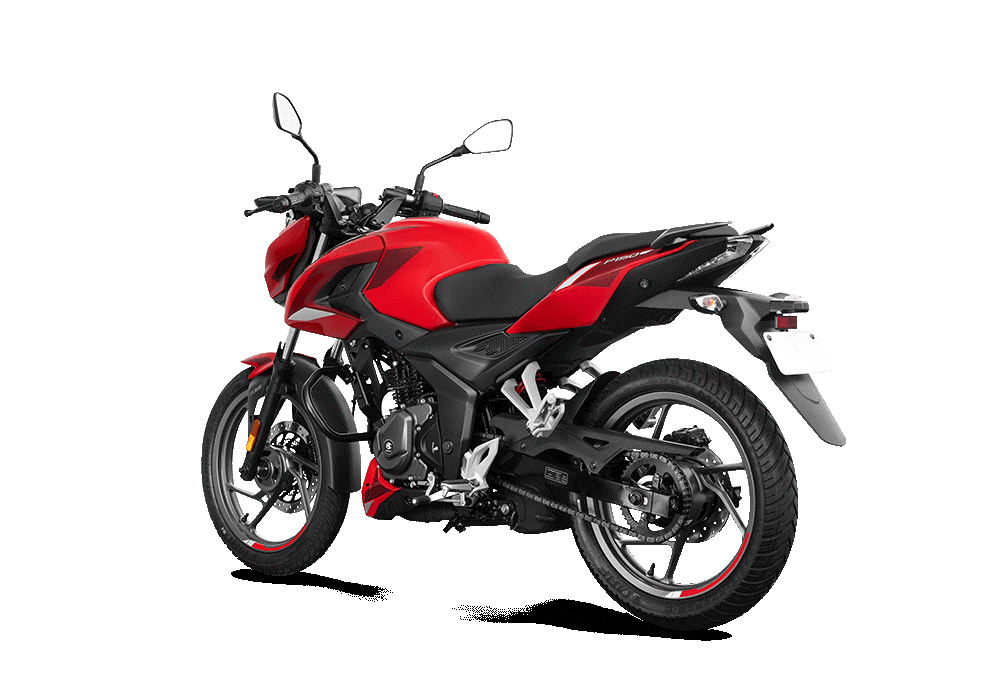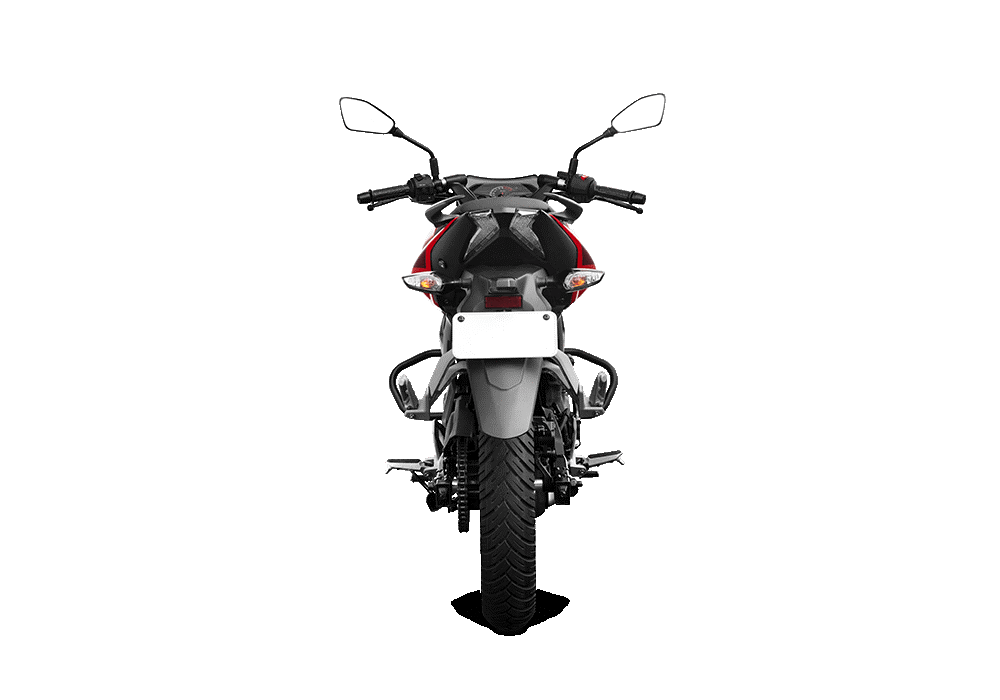



In late 2001, something very significant happened at Bajaj Auto. For decades, it had been known as a maker of affordable, reliable and frugal mass-market two-wheelers that weren’t particularly exciting to ride or look at. All that changed when the firm decided that an image makeover was necessary – and thus were born the Bajaj Pulsar twins. These two motorcycles succeeded at many things, not least making Bajaj a fun biking brand, and the Pulsar has been the mainstay in its stable since then, through all its iterations.
A brand new Pulsar platform was launched in 2021, and it is on that the P150 is based. Every Pulsar has had its share of niggles but none of those has been in the looks department. Right from the first models, this is a bike that has always looked sporty (sometimes even aggressive), and the P150 carries on that tradition.
It’s somewhat similar to the earlier N160 and even the N250 but it has a new headlight, among other things. There are a series of creases and contours on it, and the way it flows from front to back gives the impression of movement; the build quality, the level of fit and finish and the paint and switch quality are all at par for this segment. Don’t expect it to stand out a mile on the road, though – although the P150 is a very modern-looking bike, it also blends into the crowd as far as design is concerned.

As far as features go, there are enough to keep it competitive. The instrument panel is part-digital, which could be a drawback for those expecting all-digital instruments like in the TVS Apache RTR 160; the Pulsar also doesn’t get Bluetooth. Nevertheless, all the relevant data is presented to you – speed, revs, distance, time, gear position and trip meters. A USB charger is also thrown in, and you get single-channel ABS. The headlight is rather good because it’s an LED projector unit; the daytime running lamps are also LEDs.

The bike has clearly been built to be easy to get on to, with its 790mm seat height, and I had no problem sitting on it comfortably with my feet absolutely flat on the road. You can get either a one-piece handlebar or clip-on units, depending on your preference; the clip-ons will mean that you have to lean forward a bit (I prefer sitting more upright). The foot pegs are set slightly back, so the riding position is largely forward-leaning but still comfortable. The seat is supportive and should be good enough for a couple of hours of non-stop riding; I certainly didn't feel any saddle-soreness.

The Pulsar P150’s engine is straight off the one from the N160, just detuned to 150cc and with different tappets. The two engines have quite different characteristics, which is a good thing though; Bajaj wouldn't have wanted N160 buyers cribbing that they’re paying more for the same thing. The P150 makes 14.3 bhp at 8500 rpm and 13.5 Nm of torque at 6000 rpm, with a claimed 95 per cent of that torque available from 3500 rpm. I’m willing to believe that claim, since the bike really does feel very tractable from low down in the rev range, with nicely spaced gear ratios to match.
In top gear, the P150 is perfectly content puttering along at low speed, without sputtering, so in slow-moving traffic, you don’t have to keep working the gearbox; the clutch is light and the shift action smooth, which helps. The engine is also refined, with no real vibes to speak of at the handlebar or the foot pegs unless you're really wringing the engine’s neck.
The performanceFrom as low as 25 kph in top gear, rolling on the throttle results in smooth forward progress, although it isn’t especially rapid. Post around 5000 rpm, the engine becomes more alive and performance is genuinely pleasing, with a top speed of around 117 kph within reach (the sweet spot is at around 90 kph, though, keeping the revs under 7000 rpm).
The P150 hasn’t been made to go touring but I see no reason why you can’t do a Mumbai-Goa run every now and then; the bike is capable of it. It’s a good middle ground, this machine, and Bajaj has clearly taken into account things like everyday usability and practicality. The claimed mileage is around 50 km per litre, which should give you a range of close to 600 km.
The bodyThe P150 has a steel cradle frame, using the engine as a stressed member. It’s close to the N160 in many ways but has its own chassis, different mounting points and riding geometry. There are 31mm telescopic forks up front and a monoshock at the back, and both units contribute to the P150 having a quality of ride that’s well balanced between softness and some sportiness. Bumps are absorbed well, without you feeling like you’re going to be ejected from your seat, and straight-line stability is confidence-inspiring.
The riding position lends itself well to attacking corners, which the bike also does well; it’s predictable and composed through the bends. The twin disc brakes (one each up front and at the back) are excellent, and the single-channel ABS operates in a non-intrusive way. Contributing to the handling (and fuel efficiency) is the fact that this bike is close to 9 kg lighter than the previous Pulsar 150.
The pricePrices begin at Rs 1.17 lakh for the variant with a single-disc brake while the twin-disc variant with clip-ons comes in at Rs 1.2 lakh (both ex-showroom). This makes a top-spec P150 a shade cheaper than the Pulsar N160 with single-channel ABS, which is a tricky proposition. Do you save that money and opt for better fuel efficiency and everyday usability, or do you part with some extra dough and get a bike that is much more fun to ride? The answer, of course, is entirely dependent on your riding style and requirements.
All told, the P150 is a significant upgrade over the older bike on every parameter, and it remains a Pulsar at heart – it’s sporty, fun to ride, looks sharp and is reasonably priced, making it a worthy addition to the Bajaj stable.
Discover the latest Business News, Sensex, and Nifty updates. Obtain Personal Finance insights, tax queries, and expert opinions on Moneycontrol or download the Moneycontrol App to stay updated!
Find the best of Al News in one place, specially curated for you every weekend.
Stay on top of the latest tech trends and biggest startup news.